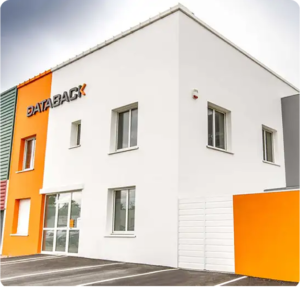Ransomware, RAID failures: businesses face critical scenarios
Servers, hard disks, PCs and laptops account for the majority of data loss. Alongside the common scenarios that companies know – or believe they can solve, critical situations can arise, such as Ransomware or RAID server failures.
Ransomware and data hostage-taking
The huge growth in ransomware (or ransomware, ransomware…) since 2012 highlights just how valuable and sensitive data has become. These computer viruses act as cryptolockers (or crypto-lockers) to take this capital hostage. The most famous of these are CryptoLocker, Wannacry, CryptoWall, Petya… and affect companies, institutions and individuals alike. However, recent trends show an increase in targeted attacks against businesses.
Ransomware infects computers by encrypting data in order to extort money from the user in exchange for the encryption key. They spread like a Trojan horse via fraudulent, official-looking e-mails (message or notification from an institution, delivery company, etc.) or infected websites: the ransomware installs itself on the computer by opening an attachment, clicking on a link or downloading a file. Appearances are sufficiently polished or innocuous to deceive vigilance.
Awareness-raising and preventive measures (updated anti-virus software, backups, etc.) are obviously the first precautions to be taken to guard against them. But like all viruses, ransomware is constantly evolving, and is becoming ever more ingenious in its innovative attacks. In the event of infection, you are strongly advised not to pay the ransom, as there is no guarantee that you will receive the encryption key in return. Even so, decryption errors can lead to the permanent loss of data.
RAID server failures
RAID servers are popular with businesses and data centers alike, thanks to their many advantages. Depending on the chosen purpose and the corresponding RAID level, they provide enhanced computer system performance and/or high fault tolerance, and therefore excellent data protection. However, RAID systems are not immune to incidents, just like any server or hard disk.
In particular, any hard disk failure on a RAID 0, which is performance-oriented and not redundant, results in the loss of all data. In the case of RAID levels with redundancy, any failure of the RAID controller that enables the hard disks to communicate and manage each other will result in a complete loss of access. Finally, the simultaneous failure of several hard disks on RAID 5 will prevent any data reconstruction.
Whatever the scenario, RAID data recovery is a delicate operation requiring expertise and know-how. It must take into account all the parameters inherent in the hardware and software configuration of the RAID array:
- RAID level and hard drive combination mode
- Specific order of hard disks in the RAID array concerned
- Data block size and layout
- Parity block layout and offset
Data encryption by ransomware and RAID system failures are critical scenarios. Few companies can claim to have the in-house resources to recover their data in such cases. In such cases, recourse to a specialized service provider takes precedence over any other attempt.
3 June 2018









